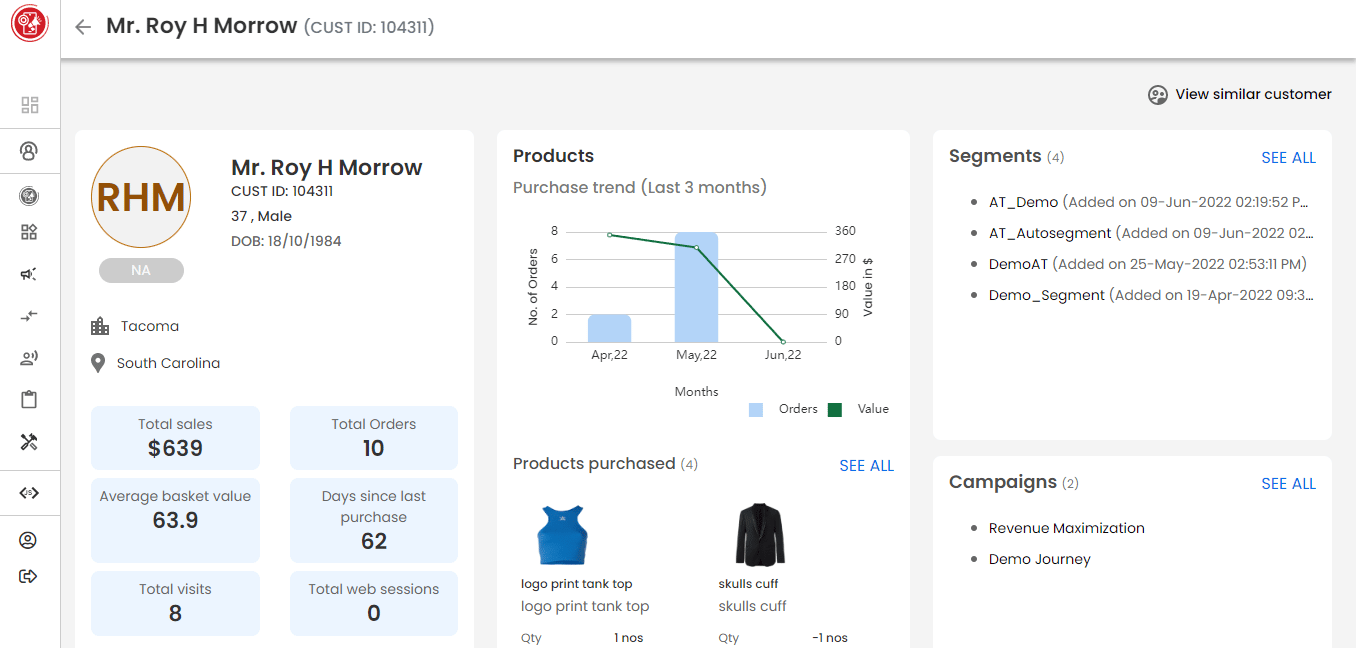
Algonomy Ensemble AI: Complete Buyer's Guide
Enterprise-grade AI-driven merchandising platform
Algonomy Ensemble AI is an enterprise-grade AI-driven merchandising platform that automates outfit curation and visual merchandising for fashion, beauty, home decor, and electronics retailers. Launched in 2025, it addresses the labor-intensive challenge of manual styling workflows that consume significant merchandising resources while limiting cross-selling potential[42][48].
Market Position & Maturity
Market Standing
Algonomy Ensemble AI occupies a specialized position within the rapidly expanding AI-driven ecommerce market, focusing on enterprise retailers with substantial technology budgets and sophisticated merchandising requirements[42][44].
Company Maturity
Algonomy's established presence in the AI retail space is reflected in the Ensemble AI platform, launched in 2025[40][42].
Industry Recognition
Industry validation includes documented implementations with enterprise retailers, particularly in fashion verticals where ensemble logic provides the strongest value proposition[52].
Longevity Assessment
Long-term viability appears supported by the platform's focus on enterprise customers with substantial technology budgets, though limited pricing transparency and support structure documentation create uncertainty around commercial sustainability compared to competitors with more transparent business models[42][44][54].
Proof of Capabilities
Customer Evidence
Enterprise Customer Validation demonstrates Algonomy Ensemble AI's capability to handle large-scale implementations, with a documented multi-billion dollar Middle Eastern retailer achieving 95% forecast accuracy and 30% excess inventory reduction using Algonomy's AI merchandising suite[52].
Quantified Outcomes
Performance Metrics include vendor-reported 160% conversion rate lifts and 396% revenue-per-visit increases across fashion and home decor implementations[44][49].
Case Study Analysis
A documented case study with a multi-billion dollar Middle Eastern retailer achieved 95% forecast accuracy and 30% excess inventory reduction using Algonomy's AI merchandising suite[52].
Market Validation
Market Adoption Patterns show enterprise retailers constitute the primary adopter base, with successful implementations requiring comprehensive data infrastructure and cross-functional coordination between merchandising, IT, and customer experience teams[42][48][53].
Competitive Wins
Competitive Validation emerges through differentiation from basic recommendation engines, with Algonomy's contextual accessory pairing functionality analyzing material compatibility, seasonal appropriateness, and style coherence to suggest complementary items[42][44].
AI Technology
Algonomy Ensemble AI leverages sophisticated machine learning algorithms to automate styling decisions through three core technological capabilities that address traditional merchandising bottlenecks.
Architecture
Technical architecture requires comprehensive data infrastructure preparation, including product attribute standardization, API-accessible inventory feeds, and real-time behavioral data collection capabilities[42][48][53].
Primary Competitors
Adobe Sensei, Vue.ai, Shopify Magic
Competitive Advantages
Competitive Advantages include real-time outfit rendering, contextual accessory pairing, and dynamic email personalization capabilities that address sophisticated styling requirements unavailable through basic recommendation engines[40][44][49].
Market Positioning
Algonomy Ensemble AI's competitive positioning centers on dynamic ensemble generation capabilities that extend beyond traditional recommendation engines offered by mainstream competitors[42][54].
Win/Loss Scenarios
Win/Loss Scenarios favor Algonomy for enterprise fashion and home goods retailers with substantial SKU catalogs requiring sophisticated styling automation, while alternatives win for organizations prioritizing simplicity, cost-effectiveness, or existing platform integration over advanced ensemble functionality[42][48][54].
Key Features

Pros & Cons
Use Cases
Featured In Articles
Comprehensive analysis of Store Design for Ecommerce for Ecommerce businesses and online retailers. Expert evaluation of features, pricing, and implementation.
How We Researched This Guide
About This Guide: This comprehensive analysis is based on extensive competitive intelligence and real-world implementation data from leading AI vendors. StayModern updates this guide quarterly to reflect market developments and vendor performance changes.
54+ verified sources per analysis including official documentation, customer reviews, analyst reports, and industry publications.
- • Vendor documentation & whitepapers
- • Customer testimonials & case studies
- • Third-party analyst assessments
- • Industry benchmarking reports
Standardized assessment framework across 8 key dimensions for objective comparison.
- • Technology capabilities & architecture
- • Market position & customer evidence
- • Implementation experience & support
- • Pricing value & competitive position
Research is refreshed every 90 days to capture market changes and new vendor capabilities.
- • New product releases & features
- • Market positioning changes
- • Customer feedback integration
- • Competitive landscape shifts
Every claim is source-linked with direct citations to original materials for verification.
- • Clickable citation links
- • Original source attribution
- • Date stamps for currency
- • Quality score validation
Analysis follows systematic research protocols with consistent evaluation frameworks.
- • Standardized assessment criteria
- • Multi-source verification process
- • Consistent evaluation methodology
- • Quality assurance protocols
Buyer-focused analysis with transparent methodology and factual accuracy commitment.
- • Objective comparative analysis
- • Transparent research methodology
- • Factual accuracy commitment
- • Continuous quality improvement
Quality Commitment: If you find any inaccuracies in our analysis on this page, please contact us at research@staymodern.ai. We're committed to maintaining the highest standards of research integrity and will investigate and correct any issues promptly.